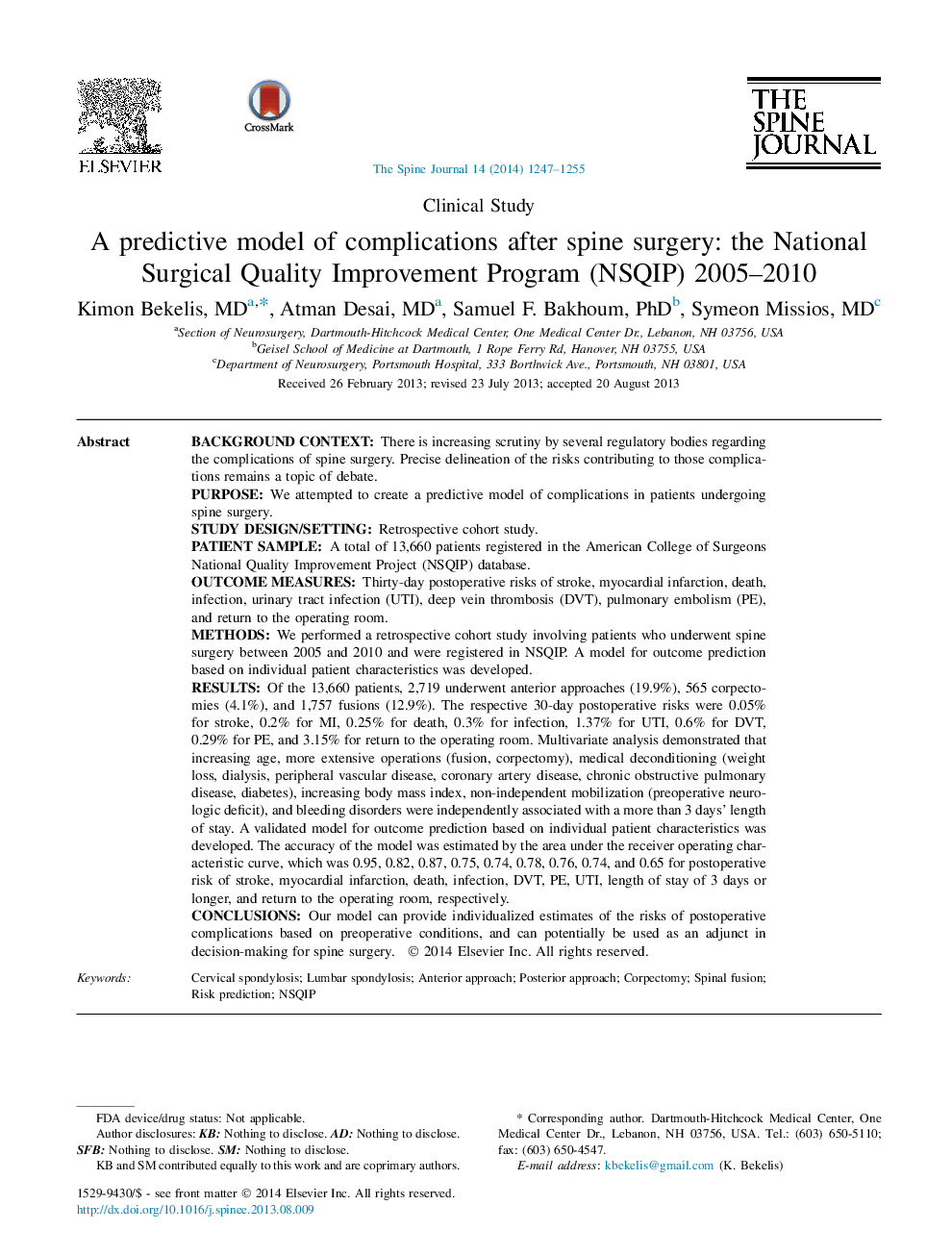| کد مقاله | کد نشریه | سال انتشار | مقاله انگلیسی | نسخه تمام متن |
|---|---|---|---|---|
| 6212377 | 1268577 | 2014 | 9 صفحه PDF | دانلود رایگان |

Background contextThere is increasing scrutiny by several regulatory bodies regarding the complications of spine surgery. Precise delineation of the risks contributing to those complications remains a topic of debate.PurposeWe attempted to create a predictive model of complications in patients undergoing spine surgery.Study design/settingRetrospective cohort study.Patient sampleA total of 13,660 patients registered in the American College of Surgeons National Quality Improvement Project (NSQIP) database.Outcome measuresThirty-day postoperative risks of stroke, myocardial infarction, death, infection, urinary tract infection (UTI), deep vein thrombosis (DVT), pulmonary embolism (PE), and return to the operating room.MethodsWe performed a retrospective cohort study involving patients who underwent spine surgery between 2005 and 2010 and were registered in NSQIP. A model for outcome prediction based on individual patient characteristics was developed.ResultsOf the 13,660 patients, 2,719 underwent anterior approaches (19.9%), 565 corpectomies (4.1%), and 1,757 fusions (12.9%). The respective 30-day postoperative risks were 0.05% for stroke, 0.2% for MI, 0.25% for death, 0.3% for infection, 1.37% for UTI, 0.6% for DVT, 0.29% for PE, and 3.15% for return to the operating room. Multivariate analysis demonstrated that increasing age, more extensive operations (fusion, corpectomy), medical deconditioning (weight loss, dialysis, peripheral vascular disease, coronary artery disease, chronic obstructive pulmonary disease, diabetes), increasing body mass index, non-independent mobilization (preoperative neurologic deficit), and bleeding disorders were independently associated with a more than 3 days' length of stay. A validated model for outcome prediction based on individual patient characteristics was developed. The accuracy of the model was estimated by the area under the receiver operating characteristic curve, which was 0.95, 0.82, 0.87, 0.75, 0.74, 0.78, 0.76, 0.74, and 0.65 for postoperative risk of stroke, myocardial infarction, death, infection, DVT, PE, UTI, length of stay of 3 days or longer, and return to the operating room, respectively.ConclusionsOur model can provide individualized estimates of the risks of postoperative complications based on preoperative conditions, and can potentially be used as an adjunct in decision-making for spine surgery.
Journal: The Spine Journal - Volume 14, Issue 7, 1 July 2014, Pages 1247-1255